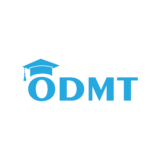Introduction
In today’s constantly changing digital landscape, SEO on-page techniques are more important. In a world where competition for online visibility is stronger than ever, understanding search engine optimization (SEO) is essential for both businesses and content providers. Among the many strategies to enhance website performance, on-page SEO stands out as a key foundation. On-page SEO is the method of optimizing individual web pages to improve their rankings in search engines and generate more relevant visitors. This strategy not only increases a site’s visibility but also improves the user experience, making it beneficial for both engines and users.
Google, or the search engine, considers the following eight factors as part of the SEO on-page technique: Although many factors are considered, these eight play a major role.
Factors Of 8 SEO On-page techniques.
- Title Tags
- Meta Descriptions
- Headings (H1, to H6)
- Alt Text for Images
- Bold and Italics
- File Name
- Links
- First line of the Paragraph
If you want to watch it in the form of a video, the Telugu video related to SEO on-page techniques is placed below. You can watch it.
1: Title Tags: As a way to help search engines rank a page efficiently for relevant searches, title tags provide them with a clear indication of what’s contained on the page. The visibility of your page for specific searches can be improved when you include your main keywords in the title tag. It is important to maintain the title’s organic structure and user engagement, however. To help avoid confusion and aid search engines in identifying the content of different pages, each web page on your website needs to have a unique title tag.
Consider length:- If you would like your title tags to appear completely in search results without being shortened, they should be brief—typically no more than 60 characters.
2: Meta Descriptions: A web page’s content is summarized in a few words called a meta description. These brief descriptions, which show up beneath the title tag in search engine results, are quite important in getting people to click on them. This is the reason meta descriptions are important Your meta description may highlight the importance of the page to the user’s search, improving the possibility that they will click on your link.
Consider length:- In order to guarantee that meta descriptions display fully in search results without being cut off, they should be short, ideally ranging between 150 and 160 characters.
3: Headings (H1, to H6): Headings make it easier for readers to look into and understand the key parts of your text by helping to divide it into smaller parts.
Headings are used by search engines to assess the importance and structure of the material on your page. Making effective use of headings helps raise the visibility of your website in search results.
By indicating to search engines what your content is about, relevant keywords in headings can help you rank higher for those phrases.
Important Note The study suggests that while it’s acceptable to use one H1 per page, it’s also acceptable to use multiple H1s as long as they’re contextually appropriate and don’t become spammy.
4: Alt Text for Images: In order for search engines to appropriately index a picture, alt text helps in their understanding of the image’s data. You can improve the page’s overall SEO worth and the search engine optimization (SEO) significance of the images by adding appropriate keywords.
5: Bold and Italics: Effective use of bold and italic text can improve your web content’s readability, emphasis, and user experience in general. These formatting strategies have the following advantages: Search engines may be told by bolded language that the highlighted content is very important, which could have an effect on rankings.
6: File Name: The name given to a file that is kept on a computer or server is known as the file name. Selecting a well-structured file name may seem like a small matter, but it may have a big impact on SEO, searchability, and organization.
7: Links: The fundamental components of the web are links, which provide the architecture that allows for navigation and information retrieval by joining two webpages. A closer examination of the various link types and their importance is provided below:
- Hyperlinks (HTML Links)
- Navigation Links
- Backlinks (Inbound Links)
- Internal Links
- External Links
8: First line of the Paragraph: A paragraph’s opening line serves as a vital point of contact for interesting and successful communication. Writers can improve the readability, coherence, and impact of their opening statement by carefully constructing it, which will enhance the overall quality and impact of their written content.
Conclusion
Furthermore, it’s essential to keep up with the most recent SEO trends and algorithms in order to regularly modify techniques and preserve a competitive edge. Through the constant use of these on-page SEO tactics and the monitoring of performance data, businesses may lay the groundwork for long-term success in the ever-changing digital market.

